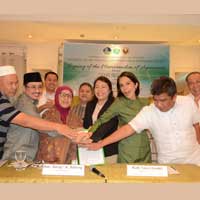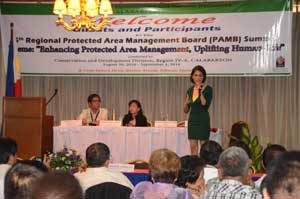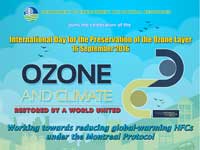LAKE LANAO WATERSHED RESTORATION PROJECT TO BEGIN SOON

The restoration of the watershed area in one of Mindanao's most important water bodies will begin soon, as the Department of Environment and Natural Resources (DENR) and the provincial government of Lanao del Sur signed on Wednesday the implementation agreement for the Integrated Natural Resources and Environmental Management Project (INREMP) covering Lake Lanao.
One of the major projects of the DENR's Forest Management Bureau (FMB), INREMP aims to manage the upper river basins and component watersheds to support poverty reduction, watershed management, biodiversity conservation and climate change policy objectives by developing the capacities of local government units (LGUs), institutions and upland communities as development partners.
The implementation agreement for the INREMP in Lake Lanao, a highly important water body in the Autonomous Region in Muslim Mindanao (ARMM), was signed by DENR Region 10 Director Ruth Tawantawan and Lanao del Sur Gov. Soraya Adiong in simple rites held at the Sulo Riviera Hotel in Quezon City.
The signing was witnessed by top DENR officials led by Secretary Gina Lopez and ARMM Gov. Mujiv Hataman. Also in attendance were Secretary Datu Abul Khayr Alonto, chair of the Mindanao Development Authority, and DENR Undersecretary for International Affairs and Foreign Assisted Program Jonas Leones.
“I have no doubt in my mind that we will make a difference in Mindanao, and we’re gonna start in a big way here in Lanao Del Sur,” said Lopez, stressing that the change in the quality of people’s lives covered by the project is the real measure of its success.
Lopez hopes to see within the next six months changes in the quality of life of people around the lake as a result of the project. Around 30 municipalities, consisting of 800 barangays, can be found within the area.
Lake Lanao is the second largest lake in the country with an approximate area of 32,000 hectares, next only to Laguna de Bay.
For her part, Tawantawan said that the INREMP project in Lanao del Sur “is the most challenging” of the four INREMP sites, owing to its “uniqueness” and “many firsts”.
“We are managing a reservation that is directly under ARMM, but done through a national government agency,” Tawantawan said, adding the project showcases “a first and big project” in terms giving assistance in Lanao del Sur under the Duterte Administration.
“This is purely assisting a group of people that have not been given assistance for so many years,” she said.
Gov. Hataman, on the other hand, expressed optimism that the project will help bring lasting peace in Mindanao as the project addresses crucial developmental issues in terms of providing sustainable economic activities within and around the lake.
Hataman noted that livelihood activities in and around the lake area are “environmenl-based and dependent on rural infrastructures,” which, he said, the project seeks to strengthen, eventually benefitting the entire province.
According to the Philippine Statistics Authority (PSA), 11 of 20 poorest provinces in the country are in Mindanao, with Lanao del Sur topping the list with a 74.3 percent poverty incidence for the first semester of 2015.
INREMP also has a project in Bukidnon (Region 10), which is also one the 11 poorest provinces in Mindanao, benefitting 22 municipalities and covering 535,908 hectares in the Upper Bukidnon River Basin.
Considered the deepest in the country and one of the major tropical lakes in Southeast Asia, Lake Lanao supplies 70 percent of Mindanao’s electricity with hydroelectric power, aside from providing irrigation water and various fishes of commercial potentials.
The other two are the Upper Chico River Basin (442,906 hectares) in the Cordillera Administrative Region and the Upper Wahig-Inabanga River Basin (60,859 hectares) in in Bohol.
The program's main objective is to address sustainable watershed management concerns in upper river basins. It also aims to reduce and reverse the degradation of watersheds caused by forest denudation and unsustainable farming practices.
INREMP also seeks to provide incentives to local communities, the LGUs, and the DENR for improving the natural resource management by generating sustainable and economic benefits.
The project is funded with a loan from the Asian Development Bank and the International Fund for Agricultural Development and grants from the Global Environmental Facility and the Climate Change Fund of the Philippine government. The total fund for the project is US$154.12 million. ###
- Details
- Parent Category: News & Events
- Category: Press Releases





